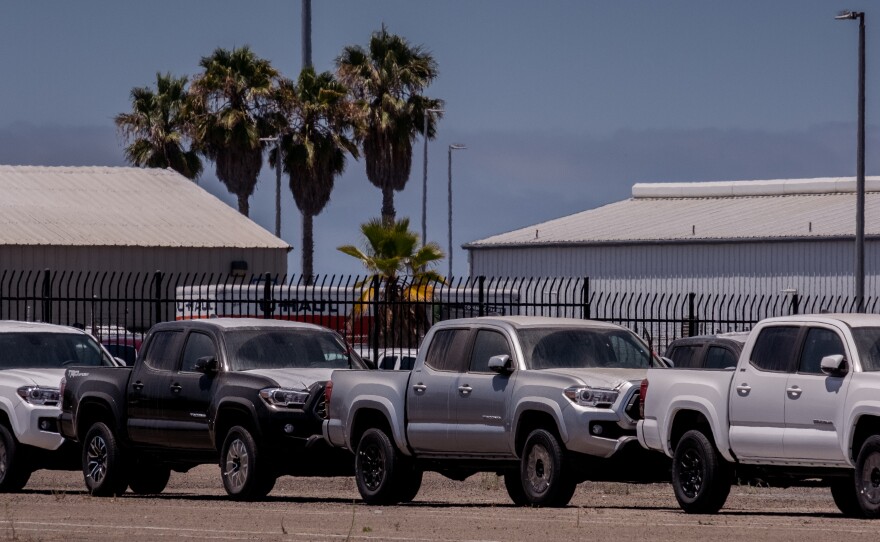Todd Southivong is hauling a full load of cars out of the marine terminal lot in National City. He’s been a car hauler since 2007. Up until recently, regular trips and a full load have been a rarity because of pandemic supply-chain issues and chip shortages.
"It was, tough yes," he said. "We barely had work. We’ve been dropping one, two cars here. To make a full load, you got to go about five drops."
But, he said, business has been picking up.
"For now, I don’t know, but the last two months have been picking up," Southivong said.
He said he now did an average of two loads a day. The one he has loaded up is headed for Santa Ana and the one he took earlier in the day he took to Riverside.
A few miles away from the terminal is the Mile of Cars, one of the oldest car associations in the country. It was started in 1900.
"It’s clearly an institution in the city" said Brad Raulston, city manager of National City.
He said not only was it an institution in his city, but it and other car dealerships also help bring in about $10 million a year, a big part of the city’s revenue, which provides services like public safety.
"Somewhere from a quarter to a third of our sales tax revenue that we depend on to provide core services," Raulston said. "When COVID actually hit, there was a significant decrease of course. When I say significant, you know, I would say 40-50% of a decrease," Raulston said.
He said the dealerships supplemented with used car sales and that decrease only lasted a quarter. Now they’re seeing a steady three to five percent increase in that revenue.
"So, when we look at the data, it’s impossible to segregate new cars vs. used cars. As new cars became a challenge ... the demand went up for used cars considerably so that did balance the scales," said Raulston.
"You thought 2008-2009 was crazy, when GM and Chrysler filed for bankruptcy and sales dropped 50%, and said: 'Ah, nothing like this craziness could happen in my career again,'" said Brian Maas, president of California New Car Dealer Association.

Maas said he'd seen a lot in the more than two decades he’s worked in the auto industry. But then, he said COVID-19 broke everything.
"There’s not enough inventory to go around. You’re waiting days or weeks or months for particular vehicles. Prices are going crazy, both in used cars and in new cars. It’s really unprecedented," Maas said.
He said the overall picture with new car sales had stabilized somewhat despite that initial drop but now they’re about 10-15% below pre-pandemic levels.
"That’s not because there isn’t demand. There’s significant demand, which is why you’ve seen the price of cars go up considerably over the last several months or year, year and a half, but it’s really a question of not having the supply of cars to fulfill the needs of consumers," Maas said.
Maas said that, though we may have seen rows and rows of new trucks at the port in National City, not all makes and models are having the same luck when it comes to supplies, and that may continue to be an issue through 2023. But he’s optimistic, especially when it comes to prices.
"Hopefully we can get through it and get to a little bit more normalcy in the coming months," Maas said.
And that will be a good thing not just for customers but car haulers like Southivong and cities like National City relying on this industry.






